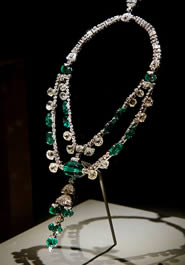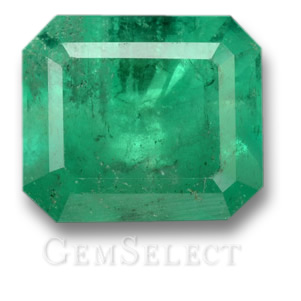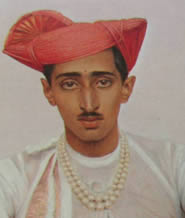|
تمت مراجعته من قبل Andreas Zabczyk
Famous Jewelry: The Spanish Inquisition Necklace
The Spanish Inquisition Necklace of the Smithsonian Institute
The Spanish Inquisition Necklace is one of the most famous pieces of jewelry today. It is an antique silver necklace composed of diamond and emerald gemstones. Since 2008, it has been on display in the Janet Annenberg Hooker Hall of Geology, Gems and Minerals, which is part of the Smithsonian Institute's National Museum of Natural History, located in Washington DC, USA. The diamonds and emeralds featured in the necklace are the oldest-known cut gemstones belonging to the National Museum. The famous necklace is surrounded by mystery since most of its history remains unknown. The story of the Spanish Inquisition Necklace begins with its first recorded owner, Tukoji Rao III, the Maharaja of Indore. Indore was one of the princely native states of India during the early 20th century. Tukoji Rao III eventually handed the necklace down, along with the throne, to his son Yashvantrao II. In 1947, Yashvantrao II later sold the necklace to Mr. Harry Winston, a well-known American jeweler.  The Blue Hope Diamond, Photo by Chip Clark and the Smithsonian
Harry Winston was the person responsible for giving the necklace its curious name - 'the Spanish Inquisition Necklace'. Nobody knows for sure why it was named after the Spanish Inquisition, as there are no known ties to the Inquisition, although many rumors claim that the necklace was formerly owned by Spanish royalty. Harry Winston exhibited the necklace for several years as part of his jewelry collection known as the 'Court of Jewels'. The Court of Jewels also included two world-famous diamonds - the blue Hope Diamond and the Star of the East. The necklace was loaned to actress Katharine Hepburn who wore it to the 19th Academy Awards. Finally, in 1955, Harry Winston sold the necklace to a Mrs. Cora Hubbard Williams from Pennsylvania. Williams was the last person to own the necklace before she donated it to the Smithsonian Institute in 1972.  Colombian Emerald
The Spanish Inquisition Necklace contains a total of 15 large emeralds and 374 diamonds. The diamonds are thought to be from India, while the emeralds are believed to be of Colombian origin, most likely from the 16th or 17th century Moghul Dynasty. The emeralds are considered to be some of the finest emeralds in the world, with the largest weighing in at 45 carats. All of the diamond and emerald gemstones are thought to have been cut in India sometime around the 17th century. It is uncertain how the emeralds made it from Colombia to India and whether the necklace was set in India or elsewhere.  The Maharajah of Indore
Most of the gemstones were delicately strung on strands of silver, requiring the careful drilling of tiny holes into the stones, which without modern tools is no easy task. The upper half of the necklace consists of a single strand of silver threaded with numerous smaller-sized diamonds, while the lower half features a double stranded design with an exquisite chandelier-like pendant. The lower strands were set with 9 large barrel-shaped emeralds and 8 large oblong football-shaped antique Indian cut diamonds. There are many stories and legends regarding the origin of the famed Spanish Inquisition Necklace. According to some, the necklace was believed to have been the property of Spanish and French royalty before it fell into the hands of the Maharajah of Indore. If it was indeed owned by Spanish and French royalty, it may be possible that the necklace was set somewhere in Europe and then later acquired by the Maharajah of Indore; possibly through an auction house such as Christie's, which was founded in 1766. One thing for certain is that the legendary necklace has never been modified since it was acquired by Mr. Harry Winston in 1947, which means it has been in its present form for many years, making it one of the most historical pieces of jewelry today. هذه الصفحة بلغات أخرى
|
| STAY IN TOUCH | NEWSLETTER |
| *أنت تقوم بالتسجيل لتلقي بريد إلكتروني ترويجي من GemSelect. |
حقوق النشر © 2005-2024 جميع الحقوق محفوظة لـ GemSelect.com.
يُحظر تمامًا الاستنساخ (نص أو رسومات) بدون موافقة كتابية صريحة من GemSelect.com (SETT Company Ltd.).
2497